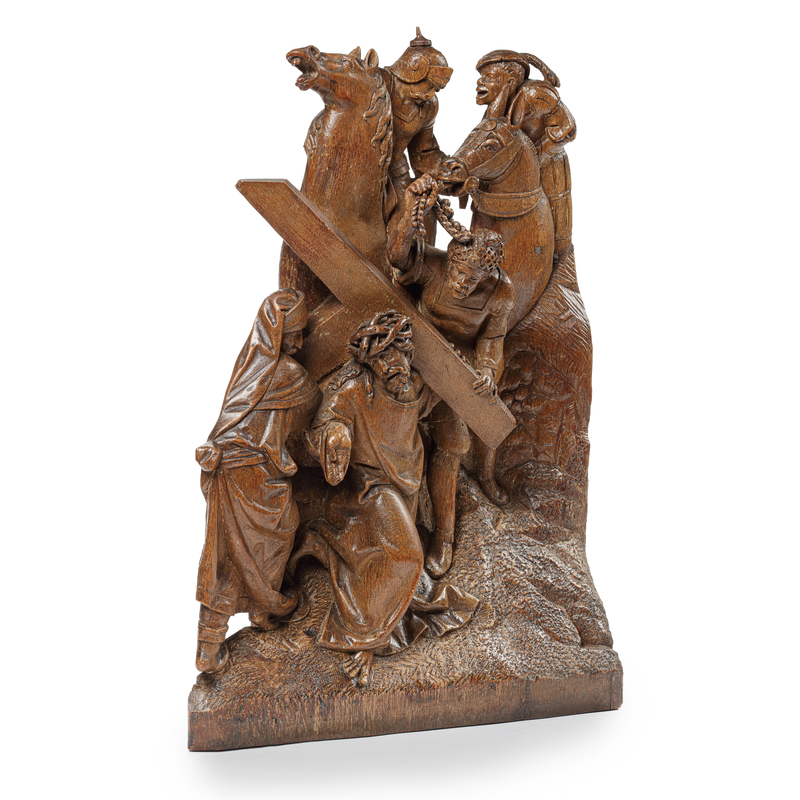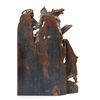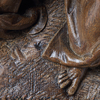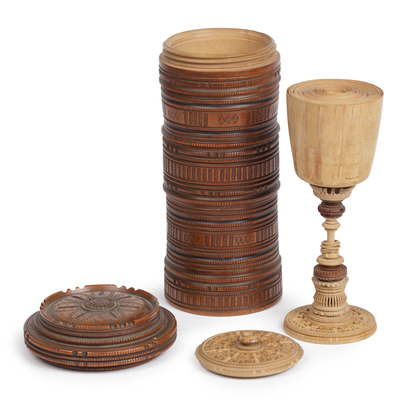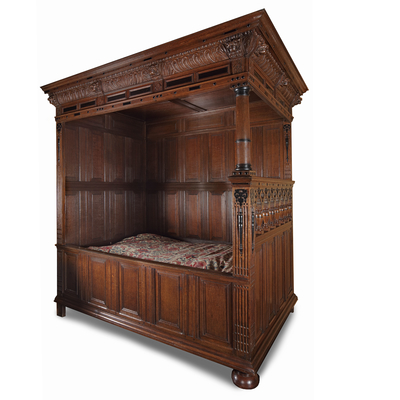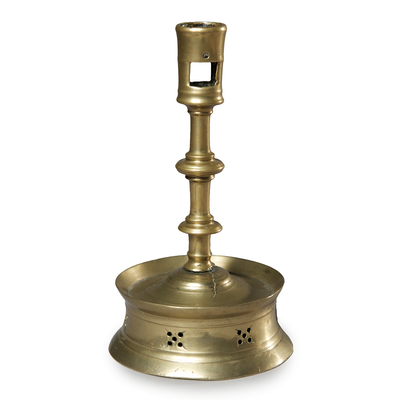Christ carrying the cross, sculpture
Global shipping available
- Origin
- Antwerp
- Period
- Ca. 1540
- Material
- Oak
- Signature
- Guildmark on the front (open hand), lower left to the robe of Christ
- Height
- 59 cm
- Width
- 39.5 cm
- Depth
- 11.5 cm
- Literature
A. Huysmans, ‘De retabelproductie in Brussel, Mechelen en Antwerpen’, in: A. Huysmans (ed.), Beeldhouwkunst van de Zuidelijke Nederlanden en het Prinsbisdom Luik - 15e en 16e eeuw, Brussel 2000, pp. 27 - 38.
H. Nieuwdorp, ‘Inleiding’, in: H. Nieuwdorp (ed.) Antwerpse retabels - 15e en 16e eeuw, Antwerpen 1993, pp. 14 - 23.- Provenance
Le Floc'h Maison de Ventes, 2020, sale A-277-132 (Vente de Tableaux, mobieler, objets d'art, tapis & tapisserie), lot 130.
Questions about this object?
Please use one of the contact options below:
Description
This detailed and emotional piece depicts the Carrying of the Cross, one of the scenes from the Passion of Christ. After his death sentence, Christ is taken by soldiers to Golgotha to be crucified there. Jesus is weakened and sinks through his knees, while the Roman soldiers on horseback laugh at him and force him to move on. To the right of Jesus, Simon of Cyrene helps to carry the cross. This Simon was forced by the soldiers to carry the cross because Christ was too weak to carry it himself. To the left of Christ is a soldier with a scourge in his hand. Christ, crowned with a crown of thorns, shows as a sign for what is yet to come his still unharmed hands. The cross in the shape of the letter T is a tau-cross and is also called St. Anthony’s Cross or Crux Commissa. The detailed parts, such as the prancing horses, the stumbling Christ, and the menacing scourge, emphasize the emotion of the sculpture. The hallmark of Antwerp, an open hand, is branded on the ground to the left of Christ’s cloak.
Retables are figurative representations of paintings and sculptures which, in the Roman Catholic Church, are placed against the wall behind the altar or on top of it. The word retable comes from the Latin retro tabula (back, plate). Retables often consist of several panels and a combination of sculpture and painting. This Carrying of the Cross originates from a retable made in Antwerp. In the course of the fifteenth century, the major cities of Brabant, Antwerp, Mechelen, and Brussels, developed into centres of retable art. Antwerp in particular became a centre of production; due to its favourable location, the city held a good international trading position and the organisation of the guilds in the city ensured that the production process ran smoothly. The production of an altarpiece involved various craftsmen and disciplines, and the St. Lucas guild organised all the art craftsmen, such as painters and sculptors. This was in contrast to many other cities, such as Brussels, where each discipline had its own guild and there was much rivalry. The St. Luke’s Guild ensured cooperation in the production of the retables and the establishment of specialised workshops. A certain uniformity in the themes depicted on the altarpieces developed, and especially the Marian altarpiece and the Passion altarpiece were much in demand.
